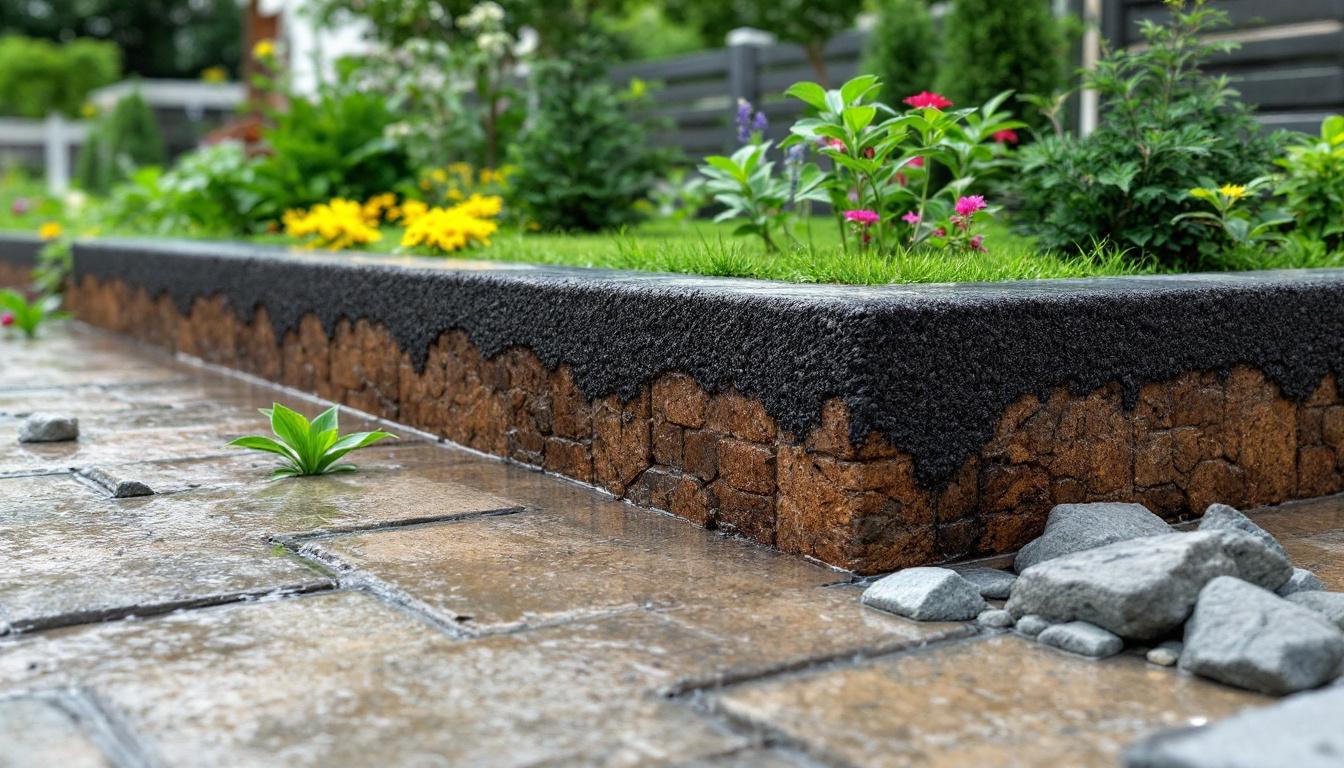Water is one of the most damaging forces to our homes, causing foundation cracks and basement leaks. That’s why understanding exterior waterproofing is essential for every homeowner. By addressing the signs of water damage early, we can prevent costly repairs and protect our property from long-term issues.
In this text, we’ll explore effective waterproofing solutions that safeguard our homes. Whether we’re dealing with patios, retaining walls, or the foundation itself, knowing how to fix exterior leaks can save us time and money. Let’s jump into the importance of exterior waterproofing and discover how professional waterproofing contractors can help us maintain a dry and secure living space.
What Is Exterior Waterproofing And why it Matters
Exterior waterproofing involves applying methods to protect a building’s structure from water intrusion. This process is vital for preventing foundation damage, mould growth, and moisture buildup in walls. Residential exterior waterproofing focuses on safeguarding homes, especially those in high-rainfall or flood-prone areas.
Exterior waterproofing prevents foundation cracks and basement leaks. For example, using coatings and membranes on outer walls effectively shields against moisture. Also, installing weeping tile systems redirects water away from basements, minimising risk.
Homeowners should look for signs of water damage, such as wet basement conditions or mould spots on walls. Addressing these issues promptly can save us from costly repairs. Local exterior waterproofing companies offer tailored solutions to protect our properties and enhance their value.
7 Signs Your Property Needs Exterior Waterproofing
Recognising the signs of water damage early can prevent severe issues. We’ve identified seven key indicators that suggest your property requires exterior waterproofing.
1. Water Stains on Basement Walls
Water stains on basement walls appear as yellow or brown marks. These stains indicate moisture penetration through walls. Immediate action can prevent further deterioration.
2. Musty Smell & Mold Growth
A musty smell in your home often signals excess moisture. Mold grows in basements, crawl spaces, and on exterior walls due to this moisture. Addressing it prevents health issues and structural damage.
3. Peeling Paint or Efflorescence
Peeling paint or white, chalky deposits known as efflorescence on walls indicate water seepage. These signs show that moisture is affecting the wall‘s integrity, requiring waterproofing solutions.
4. Foundation Cracks & Structural Damage
Foundation cracks can expand over time. These cracks allow water to enter, leading to serious structural damage. Timely basement crack repair helps maintain structural integrity and protects against water intrusion.
5. Water Pooling Near Foundation
Water pooling near your foundation occurs due to improper drainage. This condition can cause water to seep into the foundation, prompting the need for effective drainage solutions.
6. Increased Humidity Indoors
High indoor humidity levels often result from water infiltration from outside. This moisture can lead to discomfort and promote mould growth. Monitoring humidity levels helps assess waterproofing needs.
7. Flooding or Damp Basement Floors
Flooding or damp floors in your basement is a significant sign of inadequate waterproofing. It indicates pressing leakage issues that require immediate attention. We offer free moisture assessments to detect early signs of water damage on your property.
Methods Of Exterior Waterproofing

Focus on effective methods of exterior waterproofing to protect homes from water damage. Each technique reduces moisture buildup in walls, which prevents issues like foundation cracks and mould growth.
Membrane Systems
Membrane systems form a barrier against water intrusion. We apply waterproof membranes on basement exterior walls, ensuring a sealed surface. Common options include liquid membranes and sheet membranes. Liquid membranes create a seamless layer, while sheet membranes provide durable protection. Both solutions maintain basement integrity and reduce the chances of a wet basement.
Drainage Systems
Drainage systems redirect water away from properties, essential in preventing flooding. We carry out various drainage methods, such as French drains, to manage subsurface water effectively. Channel drains work on surfaces, ideal for patios and driveways, while sump pumps eliminate accumulated water from basements. Proper grading and sloping of landscapes enhance water flow, reducing potential water damage to foundations.
Choosing The Right Exterior Waterproofing Solution
Selecting the appropriate exterior waterproofing solution requires careful consideration of specific factors. We need to evaluate our property’s unique environment and the signs of water damage. This ensures we carry out effective waterproofing methods to eliminate moisture buildup in walls and prevent future issues.
Factors To Consider
- Soil Type: We must understand the soil composition around our home, as clay-heavy soil can retain water, leading to foundation problems.
- Water Drainage: We should assess existing drainage systems. Adequate drainage channels can prevent water pooling near the foundation, reducing waterproofing issues.
- Building Style: We need to consider our home’s architecture, as different styles may require tailored waterproofing solutions.
- Climate Conditions: We must factor in local weather patterns. Areas prone to heavy rainfall require more robust waterproofing systems to ensure adequate protection.
Common Mistakes To Avoid
- Ignoring Early Signs: We shouldn’t overlook early indicators of water damage, like peeling paint and musty smells, which signify potential issues.
- Neglecting Professional Help: We must avoid the trap of DIY solutions when dealing with serious waterproofing needs. Hiring experienced exterior waterproofing companies near us offers dependable assessments and solutions.
- Overlooking Maintenance: We should not forget about maintaining waterproof systems. Regular inspections prevent small issues from escalating, saving us time and money in the long run.
- Relying Solely on Sealants: We need to understand that while sealants can help, relying on them alone doesn’t replace a comprehensive waterproofing strategy, such as exterior foundation waterproofing methods.
Conclusion
Effective exterior waterproofing protects homes from costly damage caused by moisture and foundation issues. Identifying early signs like water stains, mould, or pooling water ensures timely intervention. The right waterproofing method—whether membranes, drainage systems, or grading—depends on soil type, climate, and structural needs. Avoiding DIY fixes and prioritising professional solutions enhances long-term protection. For reliable exterior waterproofing services in Guelph and Kitchener, expert assessments ensure a dry, secure home.
Frequently Asked Questions
What are common signs of water damage?
Common signs include water stains on basement walls, musty smells, mould growth, peeling paint, foundation cracks, water pooling near the foundation, increased indoor humidity, and damp basement floors. Noticing these signs early can prevent severe damage.
How can I protect my home from water damage?
To protect your home, consider implementing exterior waterproofing solutions, such as installing drainage systems, applying waterproof membranes, and ensuring proper site grading. Regular maintenance and prompt action on any signs of water damage are vital.
What are the first signs that I need exterior waterproofing?
Common signs include water stains on basement walls, musty odors, peeling paint, foundation cracks, and water pooling near your home’s foundation.
How much does outdoor waterproofing cost?
Exterior waterproofing typically costs between $3,000 – $10,000+, depending on the foundation size, waterproofing method, and drainage solutions required.
Foundation Waterproofing vs. Damp Proofing
Foundation waterproofing completely blocks water intrusion using membranes and drainage systems, while damp proofing only reduces moisture seepage and is less effective against standing water or heavy rainfall.
How long does waterproofing last?
High-quality exterior waterproofing can last 20–50 years, depending on materials used, installation quality, and ongoing maintenance.

